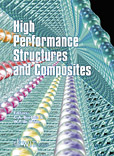Development Of Eco-composites Using Natural Bamboo Fibers And Their Mechanical Properties
Price
Free (open access)
Transaction
Volume
59
Pages
8
Published
2002
Size
518 kb
Paper DOI
10.2495/HPS020181
Copyright
WIT Press
Author(s)
T. Shito, K. Okubo & T. Fujii
Abstract
This paper presents the development of eco-composites using natural bamboo fibers and their basic mechanical properties. Tensile strength of the bamboo fiber bundles reinforced composites (BFRC) was measured as well as that of bamboo fiber bundles. The bamboo fibers bundle was selected into 125-210pm in diameter by a sifter machine from the bamboo chips. The BFRC were fabricated by the hot press molding using a maleic anhydride modified polypropylene as a matrix. The experimental results showed that the specific modulus of bamboo fiber bundles was as high as that of conventional glass fibers. The test result means that the bamboo fibers have a potential to be applicable as the reinforcement of eco-composites. The optical photographs of the material cross section showed an existence of many voids in the BFRC. The SEM photographs of the fractured surface of the specimen also indicated that the resin impregnation into the reinforcements was still insufficient at the bundle crossing point. Then, in this study, the steam explosion method was applied to extract bamboo fibers from the natural bamboo. The single bamboo fibers (BFc) were mechanically separated using a cooking mixer. The tensile strength of BFRC using BFc (BFcRC) increased about 1.5 times of MAPP. It was also found t h a t Young’s modulus of BFcRC increased about 300% of the resin. The impregnating state of resin into the BFc showed that the voids in the specimen drastically were decreased by using the steam explosion. It was also found t h a t the size of voids in BFcRC is remarkably smaller than that of BFRC. If Bamboo was used as a reinforcement of the thermal plastics, bamboo fiber bundles should be modified into the \“cotton shape”.
Keywords





